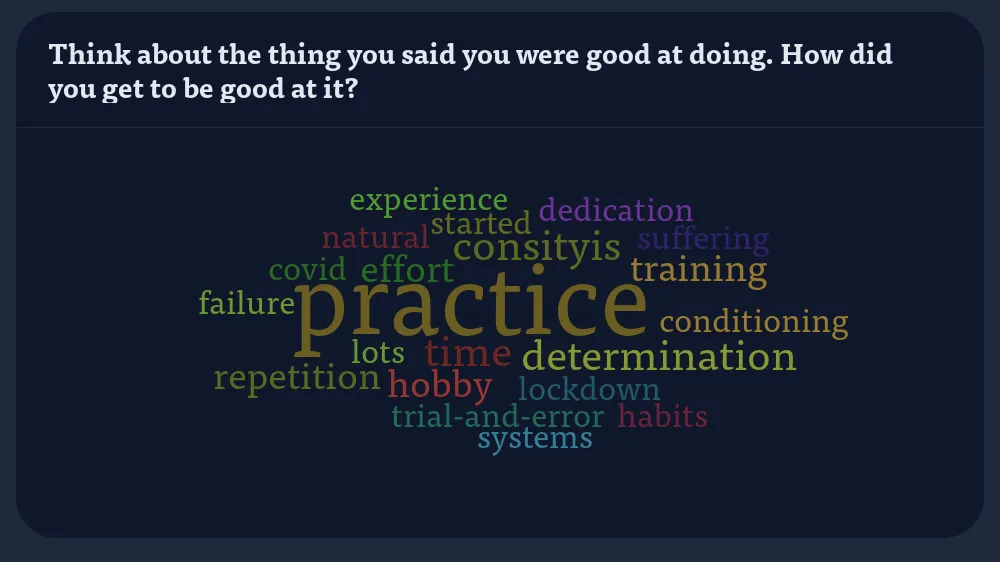
How people feel about icebreakers can be quite different: Some love them, some loathe them. Robert Talbert, from Grading for Growth, is a self-proclaimed icebreaker-hater because he believes all too often these small community-building activities do not actually live up to their celebrated potential. However, relationship building in the classroom is important and in a recent article, Talbert introduces an icebreaker activity that even the biggest critic might try out, because it offers learners and instructors extensive feedback on approaches to learning.
The activity
Ask students two questions, one at a time, as a think-pair-share:
- What is something that you are good at doing?
- How did you get good at the thing you are good at doing (1 word)?
Provide students with the first question clarifying that the “something” has to actually take some amount of effort to do (not sleeping, watching TV, etc.). You can say it verbally to the class or use a slide, give everyone ca. 30-90 seconds to think about their answer. Then, students share their responses with a partner for a minute or two. Follow up with letting students share their thoughts with the class. In a smaller class, you could ask each student in a pair to introduce the other to the class, using the “thing they shared they are good at doing” as an interesting fact. Or use a polling tool to create a wordcloud and display their answers.
Next up, the second question. Repeat this as a think-pair-share as well, but have people respond using a polling tool like PollEverywhere to create a word cloud of the responses. The most common responses will be displayed as the largest words on the cloud visual. Often, Talbert says, students will reply with things like snowboarding, soccer, guitar, etc. for question 1 and for question 2 it might be something in the lines of: Practice, determination, effort, time, failure, consistency.
What we learn
Question 1 highlights the fact that “every student is good at something and not only “something” but a thing that requires focused effort and pushing through discomfort”. Reminding students that they have already mastered challenges and they care about certain aspects of their life so much that they sometimes even endure a rocky road to success – possibly also enjoying the process along the way. As instructors, we become reminded that our students have lives outside of our classroom and learn more about their passions and funds of knowledge.
Question 2 points out that our students already have a very good idea of how to engage with difficult things, and they know well about the process steps that lead to mastery of sometimes difficult tasks. They don’t merely know about the steps, they can name exact examples where they used them before in some shape or form. An important discussion of the feedback loop can follow here, tying it into the learning processes/concepts used in your class.
Time-wise, this activity can be completed within 5 minutes, or you could decide to take an entire class discussing the results and sharing example stories about how people mastered all kinds of things. Learn more about this icebreaker activity and why Robert Talbert thinks it is a helpful tool to engage students in their learning and even address pushback, concern, doubt, or misunderstanding about your grading/feedback system.
Did you try this activity in your course? We are excited to hear about your experience!